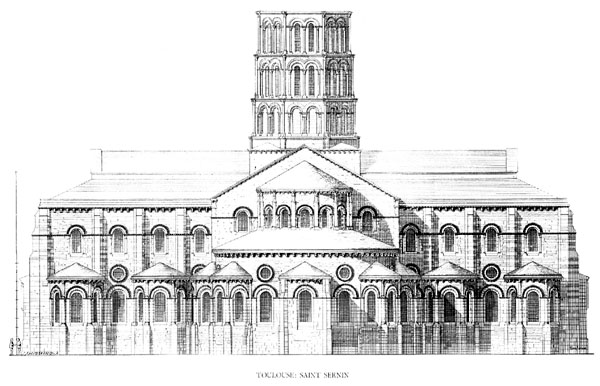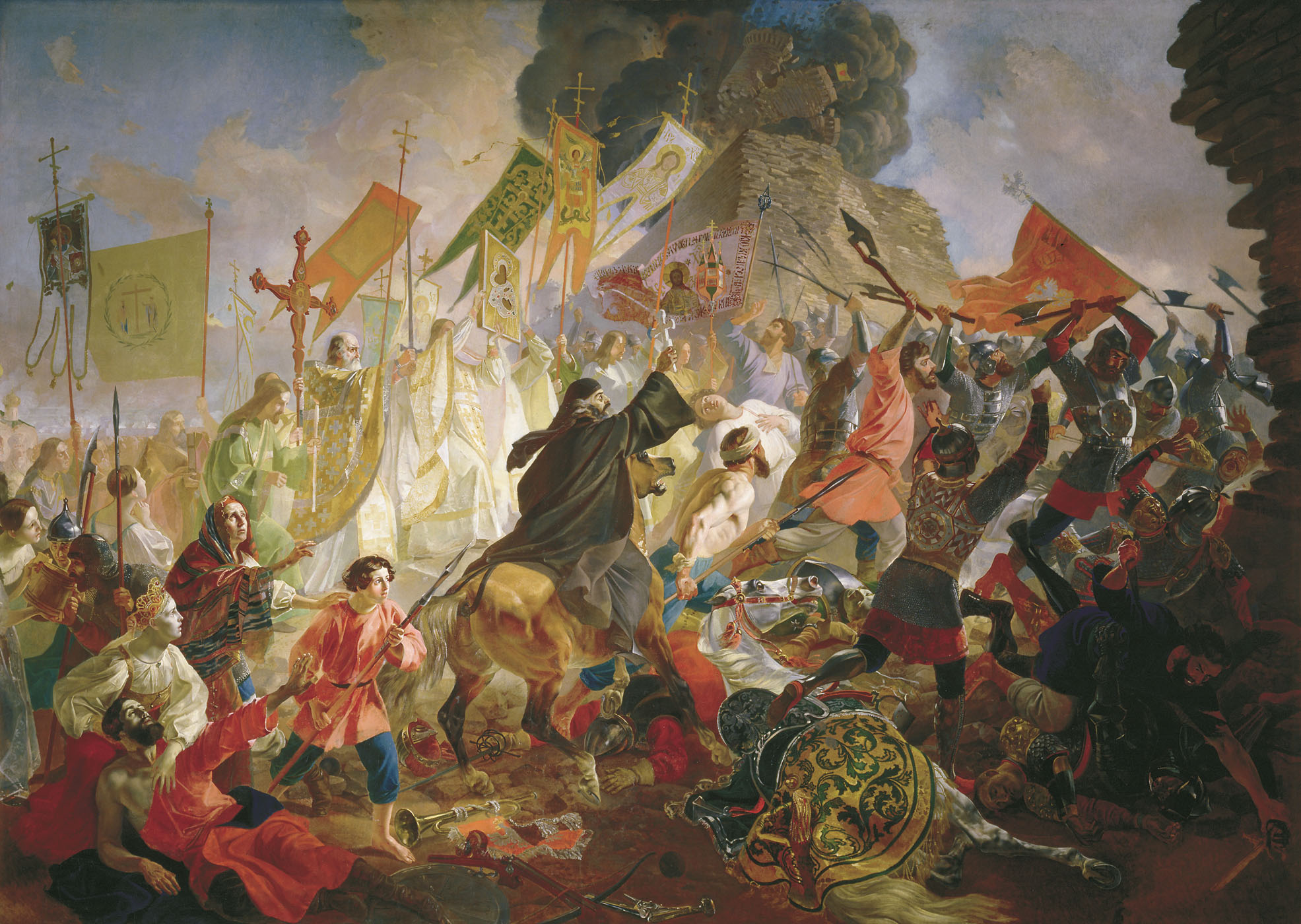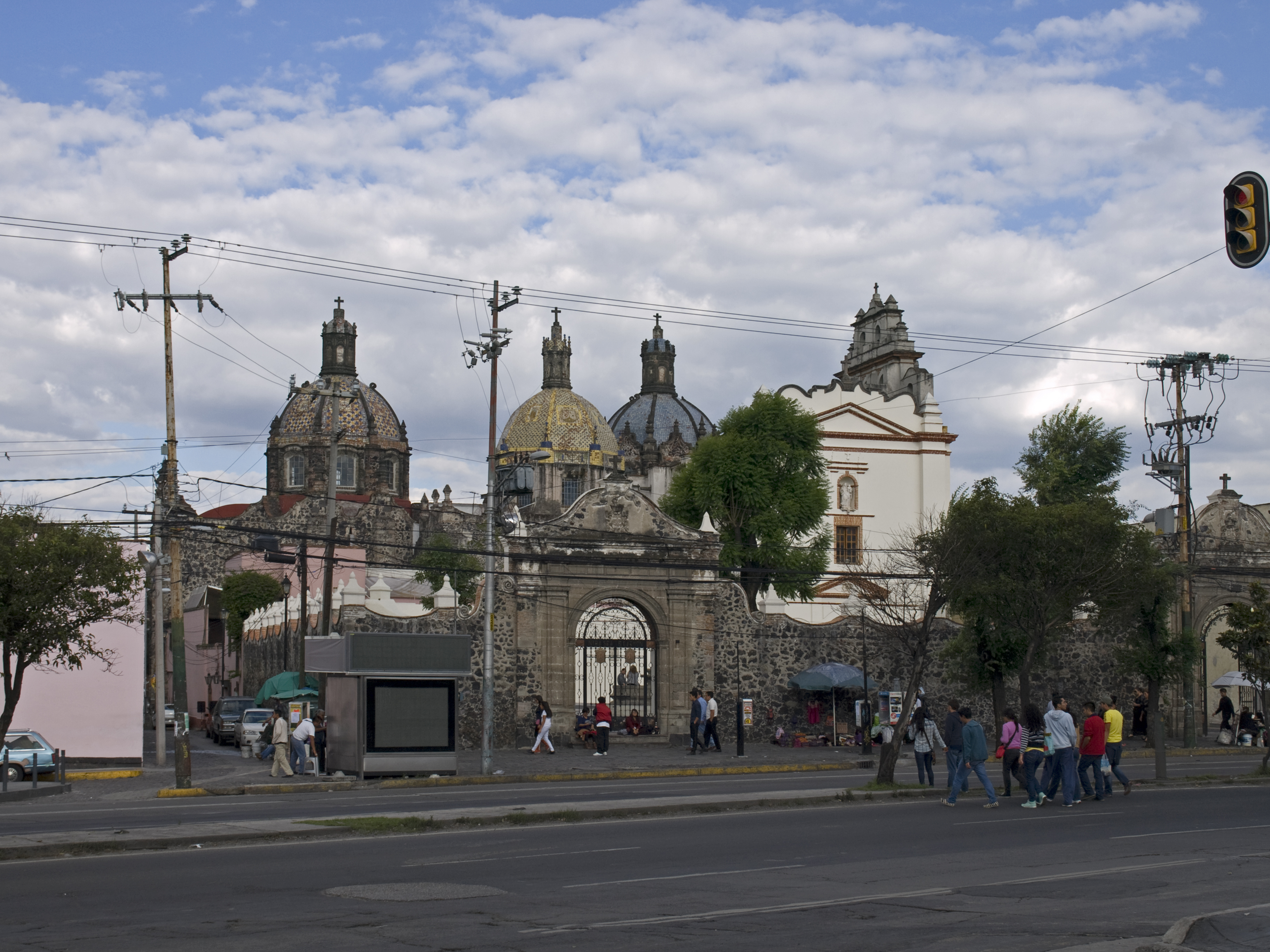|
Bell-gable
The bell gable ( es, espadaña, french: clocher-mur, it, campanile a vela) is an architectural element crowning the upper end of the wall of church buildings, usually in lieu of a church tower. It consists of a gable end in stone, with small hollow semi-circular arches where the church bells are placed. It is a characteristic example of the simplicity of Romanesque architecture. Overview The bell-gables or ''espadañas'' are a feature of Romanesque architecture in Spain. They replaced the bell tower beginning the 12th century due to the Cistercian reformation that called for a more simplified and less ostentatious churches, but also for economical and practical reasons as the Reconquista accelerated and wider territory needed to be re-christianized building more temples and ''espadañas'' were cheaper and simpler to build. Today, they are a common sighting in small village churches throughout Spain and Portugal. This simple and sober architectural element would later be brou ... [...More Info...] [...Related Items...] OR: [Wikipedia] [Google] [Baidu] |
Bell (instrument)
A bell is a directly struck idiophone percussion instrument. Most bells have the shape of a hollow cup that when struck vibrates in a single strong strike tone, with its sides forming an efficient resonator. The strike may be made by an internal "clapper" or "uvula", an external hammer, or—in small bells—by a small loose sphere enclosed within the body of the bell ( jingle bell). Bells are usually cast from bell metal (a type of bronze) for its resonant properties, but can also be made from other hard materials. This depends on the function. Some small bells such as ornamental bells or cowbells can be made from cast or pressed metal, glass or ceramic, but large bells such as a church, clock and tower bells are normally cast from bell metal. Bells intended to be heard over a wide area can range from a single bell hung in a turret or bell-gable, to a musical ensemble such as an English ring of bells, a carillon or a Russian zvon which are tuned to a common scale and i ... [...More Info...] [...Related Items...] OR: [Wikipedia] [Google] [Baidu] |
Argnat
Sayat () is a commune in the Puy-de-Dôme department in Auvergne in central France. Geography Sayat is situated northwest of Clermont-Ferrand. The commune consists of the villages Sayat, Argnat and Le Mas d'Argnat. Population See also * Communes of the Puy-de-Dôme department The following is a list of the 464 communes of the Puy-de-Dôme department of France. Intercommunalities The communes cooperate in the following intercommunalities (as of 2020):Sayat website [...More Info...] [...Related Items...] OR: [Wikipedia] [Google] [Baidu] |
San Ángel
San Ángel is a colonia or neighborhood of Mexico City, located in the southwest in Álvaro Obregón borough. Historically, it was a rural community, called Tenanitla in the pre-Hispanic period. Its current name is derived from the El Carmen monastery school called San Ángel Mártir. San Ángel remained a rural community, centered on the monastery until the 19th and 20th centuries, when the monastery was closed and when the area joined urban sprawl of Mexico City. However, the area still contains many of its former historic buildings and El Carmen is one of the most visited museums in the city. It is also home to an annual flower fair called the Feria de las Flores, held since 1856. In 1934, San Ángel was declared as a ''Pueblo Típico Pintoresco'' (Picturesque Typical Town); in 1987, due to presidential order, it was declared historical monument zone. Geography San Ángel is located in the southwest of the Federal District of Mexico along the southern end of Avenida Insurgent ... [...More Info...] [...Related Items...] OR: [Wikipedia] [Google] [Baidu] |
Church San Blas De Illescas Of Coamo
The Iglesia San Blas de Illescas ( en, Church of Saint Blaise of Illescas) is a Catholic parish church located on the center plaza of Coamo, Puerto Rico. Construction on the church began in 1661; it has since been judged "one of the most important works of religious architecture in Puerto Rico". The church is separated from the open plaza below by a series of ceremonial steps and a delicate cast iron balustrade. The delicately curved Baroque facade reflects a major reconstruction completed in 1784. A two-level bell-gable The bell gable ( es, espadaña, french: clocher-mur, it, campanile a vela) is an architectural element crowning the upper end of the wall of church buildings, usually in lieu of a church tower. It consists of a gable end in stone, with small ho ... with open arches and bells is prominently featured in the facade. The parish of San Blas of Coamo is one of the oldest on the island. with See also * List of the oldest buildings in Puerto Rico References ... [...More Info...] [...Related Items...] OR: [Wikipedia] [Google] [Baidu] |
Romanesque Architecture
Romanesque architecture is an architectural style of medieval Europe characterized by semi-circular arches. There is no consensus for the beginning date of the Romanesque style, with proposals ranging from the 6th to the 11th century, this later date being the most commonly held. In the 12th century it developed into the Gothic style, marked by pointed arches. Examples of Romanesque architecture can be found across the continent, making it the first pan-European architectural style since Imperial Roman architecture. The Romanesque style in England and Sicily is traditionally referred to as Norman architecture. Combining features of ancient Roman and Byzantine buildings and other local traditions, Romanesque architecture is known by its massive quality, thick walls, round arches, sturdy pillars, barrel vaults, large towers and decorative arcading. Each building has clearly defined forms, frequently of very regular, symmetrical plan; the overall appearance is one of simpli ... [...More Info...] [...Related Items...] OR: [Wikipedia] [Google] [Baidu] |
Romanesque Architecture In Spain
Romanesque architecture in Spain is the architectural style reflective of Romanesque architecture, with peculiar influences both from architectural styles outside the Iberian peninsula via Italy and France as well as traditional architectural patterns from within the peninsula. Romanesque architecture was developed in and propagated throughout Europe for more than two centuries, ranging approximately from the late tenth century until well into the thirteenth century. During the eighth century, though Carolingian Renaissance extended its influence to Christian Western Europe, Christian Spain remained attached to the traditional Hispano-Roman and Gothic culture, without being influenced by European cultural movements, until the arrival of the Romanesque. Romanesque architecture spread throughout the entire northern half of Spain, reaching as far as the Tagus river, at the height of the ''Reconquista'' and ''Repoblación'', movements which greatly favoured the Romanesque develop ... [...More Info...] [...Related Items...] OR: [Wikipedia] [Google] [Baidu] |
Russia
Russia (, , ), or the Russian Federation, is a transcontinental country spanning Eastern Europe and Northern Asia. It is the largest country in the world, with its internationally recognised territory covering , and encompassing one-eighth of Earth's inhabitable landmass. Russia extends across eleven time zones and shares land boundaries with fourteen countries, more than any other country but China. It is the world's ninth-most populous country and Europe's most populous country, with a population of 146 million people. The country's capital and largest city is Moscow, the largest city entirely within Europe. Saint Petersburg is Russia's cultural centre and second-largest city. Other major urban areas include Novosibirsk, Yekaterinburg, Nizhny Novgorod, and Kazan. The East Slavs emerged as a recognisable group in Europe between the 3rd and 8th centuries CE. Kievan Rus' arose as a state in the 9th century, and in 988, it adopted Orthodox Christianity from the ... [...More Info...] [...Related Items...] OR: [Wikipedia] [Google] [Baidu] |
Pskov
Pskov ( rus, Псков, a=pskov-ru.ogg, p=pskof; see also Names of Pskov in different languages, names in other languages) is a types of inhabited localities in Russia, city in northwestern Russia and the administrative center of Pskov Oblast, located about east of the Estonia, Estonian border, on the Velikaya River. Population: Pskov is one of the oldest cities in Russia. It served as the capital of the Pskov Republic and was a trading post of the Hanseatic League before it came under the control of the Grand Duchy of Moscow. History Early history Pskov is one of the oldest cities in Russia. The name of the city, originally Pleskov (historic Russian spelling , ''Plěskov''), may be loosely translated as "[the town] of :wikt:purling, purling waters". It was historically known in English as Plescow. Its earliest mention comes in 903, which records that Igor of Kiev married a local lady, Olga of Kiev, Olga (later Saint Olga of Kiev). Pskovians sometimes take this year as ... [...More Info...] [...Related Items...] OR: [Wikipedia] [Google] [Baidu] |
Molango
Molango (officially Molango de Escamilla ) is a town and one of the 84 municipalities of Hidalgo, in central-eastern Mexico Mexico (Spanish: México), officially the United Mexican States, is a country in the southern portion of North America. It is bordered to the north by the United States; to the south and west by the Pacific Ocean; to the southeast by Guatema .... The municipality covers an area of 246.7 km². As of 2005, the municipality had a total population of 10,385. Molango comes from the Word Molanco a nahuatl name that means place of the god mola a pre-Columbian deity that represents the surrounding mountains and was worshipped within the territory by Nahua and Otomi People's Who still live within this municipality to this day. The three languages spoken within molango are Spanish Nahuatl De La Huasteca Hidalguense and Otomí-Tepehua. The current mayor is Raul Lozano Cano. References Municipalities of Hidalgo (state) Populated places in Hidalgo (st ... [...More Info...] [...Related Items...] OR: [Wikipedia] [Google] [Baidu] |
Basco Cathedral
Basco Cathedral, canonically named as Our Lady of the Immaculate Conception Cathedral, and commonly known as Santo Domingo Church, is a Roman Catholic cathedral church located in Basco, Northern Batan Island, Batanes Batanes, officially the Province of Batanes ( ivv, Provinsiya nu Batanes; Ilocano: ''Probinsia ti Batanes''; fil, Lalawigan ng Batanes, ), is an archipelagic province in the Philippines, administratively part of the Cagayan Valley region. It i ..., Philippines. Because Batanes was named ''Provincia de la Concepcion'' in religious records at the time of its establishment, the first church was dedicated to Our Lady of the Immaculate Conception, Patroness of Batanes Prelature.Casas, Brigido, Fr.. Prelature of Batanes. Unpublished manuscript. It is speculated that the image of the Immaculate Conception was brought to Batanes during the 1783 expedition. As a parish church, it bears the name Santo Domingo Church, in honor of the patron saint of the capital of ... [...More Info...] [...Related Items...] OR: [Wikipedia] [Google] [Baidu] |
El Carmen Complex
El Carmen is a former convent converted to museum in San Ángel, a southern suburb of Mexico City. The convent was founded on 29 June 1615 by the Discalced Carmelites in the area of the Aztec village of Tenanitla, which was later renamed San Ángel. The founder was Father Andrés de San Miguel. This convent was built between 1615 and 1626. In the university, there was a college for theology students and a library, which contained more than 12,000 books. In 1858, the college was closed, and the complex was transferred to the local authorities. In 1929, the museum was created, and in 1939, it was transferred to the newly created Instituto Nacional de Antropología e Historia. The museum contains a large collection of Mexical colonial religious art including paintings of Miguel Cabrera, as well as original furniture of the monastery, and a collection related to the history of the monastery and relates the life of the Carmelites. See also *List of colonial churches in Mexico City ... [...More Info...] [...Related Items...] OR: [Wikipedia] [Google] [Baidu] |
Cebú
Cebu (; ceb, Sugbo), officially the Province of Cebu ( ceb, Lalawigan sa Sugbo; tl, Lalawigan ng Cebu; hil, Kapuroan sang Sugbo), is a province of the Philippines located in the Central Visayas region, and consists of a main island and 167 surrounding islands and islets. Its capital and largest city is Cebu City, nicknamed "the Queen City of the South", the oldest city and first capital of the Philippines, which is politically independent from the provincial government. The Cebu Metropolitan Area or Metro Cebu is the second largest metropolitan area in the Philippines (after Metro Manila) with Cebu City as the main center of commerce, trade, education and industry in the Visayas. Being one of the most developed provinces in the Philippines, in a decade it has transformed into a global hub for business processing services, tourism, shipping, furniture-making, and heavy industry. Mactan–Cebu International Airport, located on Mactan Island, is the second busiest airport in ... [...More Info...] [...Related Items...] OR: [Wikipedia] [Google] [Baidu] |





